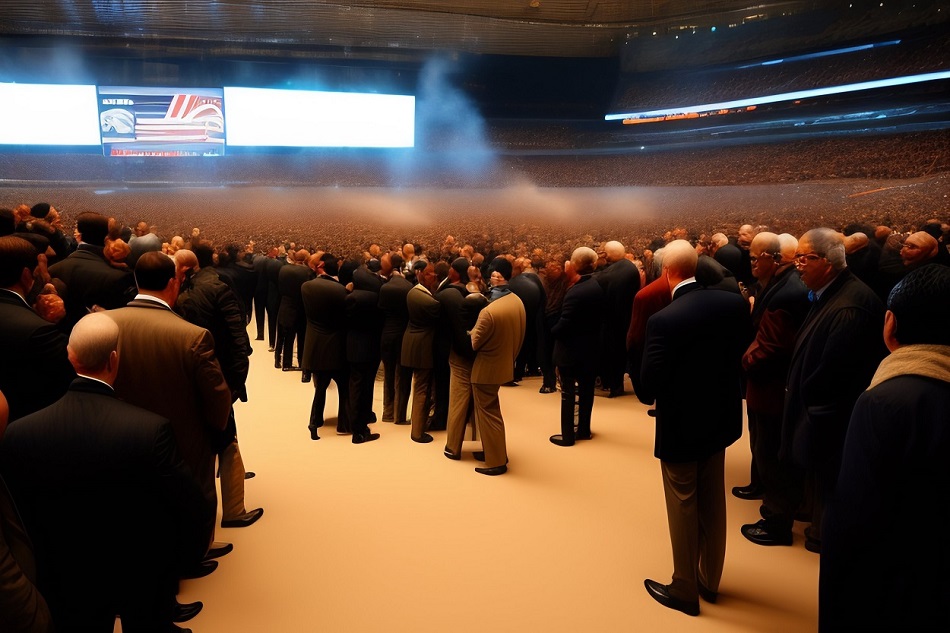In the ever-evolving tapestry of international relations, the intricate threads of history occasionally converge to bring forth harrowing tales that seem almost surreal in their complexity. The recent discord between India and Canada serves as a poignant reminder of a cataclysmic event that transpired in the year 1985—a gruesome chapter etched in the annals of aviation terror. This episode, known to the world as the Air India Flight 182 bombing or the “Kanishka bombing,” resurfaces as a painful memory, invoking emotions both bitter and sorrowful.
In the present day, the diplomatic rift between India and Canada has taken center stage. Canadian Prime Minister Justin Trudeau has ventured into treacherous waters, proclaiming the pursuit of “credible allegations” linking the Indian government to the assassination of a Sikh separatist leader in British Columbia. In response, India dismisses these allegations with resounding contempt, branding them as nothing short of “absurd.” Yet, this contemporary dispute serves as an eerie echo of a tragedy that unfolded nearly four decades ago, leaving indelible scars on the collective psyche of two nations.
The year was 1985 when the world witnessed a cataclysmic event that would alter the course of history—the bombing of Air India Flight 182. This ill-fated flight embarked on a journey from Canada to India, with a stopover in London. It was a seemingly routine flight, but on June 23, 1985, it met a catastrophic end as it exploded off the Irish coast, consigning all 329 souls on
board to a watery grave. The cause? A bomb concealed within a suitcase that had been transferred onto the flight, despite its ticket holder never boarding. The victims, a heart-wrenching tally of 268 Canadian citizens, predominantly of Indian origin, and 24 Indians, found themselves engulfed in a tragedy of unimaginable proportions. The unforgiving sea yielded only 131 bodies, leaving the rest to remain forever entwined with the depths.
But the macabre tale did not end with the explosion that rent the skies. Even as Flight 182 hurtled towards its doom, another explosion rippled through the narrative—this time at Tokyo’s Narita airport, where two Japanese baggage handlers met a gruesome end. Investigators later pieced together the grim puzzle, revealing that this explosion was intricately linked to the assault on Flight 182. It was intended for yet another Air India flight, destined for Bangkok, but destiny intervened, and the bomb detonated prematurely.
Behind this sinister plot lay the shadows of Sikh separatists, thirsting for vengeance. Their motivation stemmed from the Indian army’s ruthless 1984 storming of the Golden Temple in Punjab state, a sacred shrine that had borne witness to their aspirations for autonomy. The Royal Canadian Mounted Police (RCMP) launched a pursuit that led to the arrest of Talwinder Singh Parmar, the leader of the extremist group “Babbar Khalsa,” now banned in both Canada and India. Alongside Parmar, Inderjit Singh Reyat, an unassuming electrician, faced charges of weapons, explosives, and conspiracy.
However, the legal net proved porous, and Parmar walked free, his extradition to India thwarted. Investigators now point their fingers at Parmar as the mastermind behind the cataclysmic attack. In 2000, another twist in the narrative ensued as police apprehended Ripudaman Singh Malik, a wealthy Vancouver businessman, and Ajaib Singh Bagri, a humble mill worker from British Columbia. They faced charges ranging from mass murder to conspiracy. Yet, the culmination of an exhaustive two-year trial in 2005 unveiled a shocking verdict—both men were acquitted. The judge cited factual errors and questioned the credibility of key witnesses, leaving victims’ relatives sobbing in the courtroom.
Reyat stood as the lone convict, sentenced to ten years in the UK in 1991 for his role in the Narita airport bombing. In 2003, he admitted guilt in a Canadian court, earning an additional five-year prison term for his involvement in the Flight 182 bombing. Perjury charges in the trial of Malik and Bagri further extended his jail sentence.
As the ashes settled, questions arose, casting shadows upon the investigative process. Canadian authorities faced criticism for their perceived ineptitude in preventing the attack and their fumbling efforts in piecing together the puzzle. In response to the outcry from victims’ families, the Canadian government convened a public inquiry in 2006, presided over by a former Supreme Court judge. Its chilling conclusion in 2010 pointed to a “cascading series of errors” that paved the way for the “largest mass murder in Canadian history.”
Unfathomable as it may seem, whispers of foreknowledge emerge from the depths of history. An unnamed witness had reportedly warned Canadian police of a sinister plot to dismantle an aircraft months prior to the attack. More unnerving still, members of Canadian secret services had trailed Parmar and Reyat to a desolate stretch of Vancouver Island, where they had borne witness to “a loud explosive sound.”Remarkably, they brushed aside this foreboding signal as if it held no significance.
The 1990s bore witness to the chilling assassinations of two Sikh journalists, potential key witnesses in separate incidents in London and Canada. One of them had already been confined to a wheelchair, a grim testament to a prior shooting. In 2000, a former Canadian secret services officer, gripped by paranoia, confessed to destroying tapes containing 150 hours of telephone calls made by Sikh suspects. His reasoning? Fear that these tapes might expose the identities of informants, sending ripples through an already murky sea of intrigue.
In the aftermath of the inquiry’s damning report in 2010, then-Canadian Prime Minister Stephen Harper extended a public apology to the grieving families. He acknowledged their “legitimate need for answers” and lamented the years of “administrative disdain” that had befallen them. In 2016, Reyat, having served two-thirds of a nine-year sentence, was released from a Canadian prison. The following year, he was granted further liberty, allowed to reside wherever he pleased—a decision met with pointed criticism from experts.
The specter of the past reared its head again in recent times when Ripudaman Singh Malik met a tragic end. Shot dead in his car in Surrey, British Columbia, police described his demise as a “targeted killing.” Two men now face charges of first-degree murder, their motives concealed beneath a shroud of uncertainty.
Despite the passage of time, the Air India bombing of 1985 remains a relatively obscure chapter in Canadian history. A study conducted by the Angus Reid Institute revealed that nine out of ten Canadians possess scant knowledge of this heart-wrenching tragedy, even as its specter continues to haunt the consciousness of India. For while the majority of victims held Canadian citizenship, their roots intertwined with the Indian subcontinent, and their kinfolk still reside in the land of their ancestors. In India, a lingering sentiment prevails—one of unrequited justice, a feeling that the wounds of the past remain unhealed.
In 2006, Canadian lawyer Richard Quance embarked on a journey to India to meet with the aggrieved families. He spoke of their sense of exclusion from the judicial process, their unanswered questions about the events leading to the acquittals of Malik and Bagri. Amarjit Bhinder, whose husband had served as the co-pilot on the ill-fated flight, expressed the profound neglect










